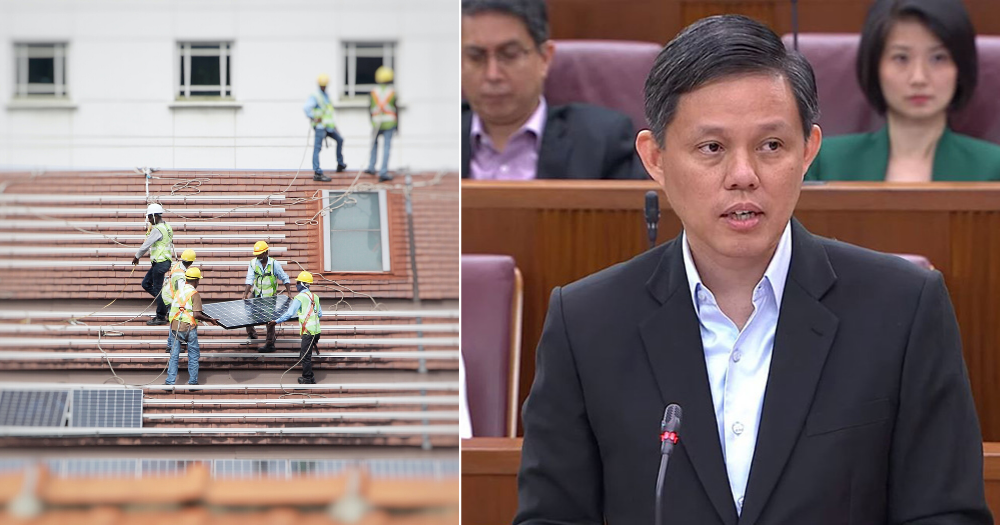The government aims to expand our solar energy capabilities by 2030 and is exploring opportunities to import clean energy from our neighbouring countries, said the Minister for Trade and Industry, Chan Chun Sing.
In a written response on Thursday (June 4), Chan responded to a question filed by Nominated Member of Parliament Anthea Ong about the sources of our electricity, and if Singapore aims to phase out coal and oil by 2030.
Only 3% of current electricity generated is from non-fossil fuel sources
In response to Ong, Chan mentioned that 95 per cent of Singapore's electricity is currently generated using natural gas.
In comparison, only three percent of electricity generated comes from non-fossil fuel or renewable sources, such as municipal waste, biomass and solar energy.
In addition, about two percent of electricity is generated from a mixture of coal, diesel and fuel.
Natural gas continues to be key energy source
Chan stated in the reply that natural gas will continue to be Singapore's dominant energy source, even in 2030.
According to the Energy Market Authority (EMA), Singapore gets its natural gas from pipelines from Indonesia and Malaysia.
In addition to our neighbouring countries, Singapore's liquefied natural gas (LNG) terminal on Jurong Island, which was built at a cost of S$1.7 billion, allows Singapore to import natural gas in liquid form from all across the world.
Described as "the cleanest form of fossil fuel", natural gas is relatively "clean" when compared to coal, as it produces half of the carbon dioxide when burned.
It is also a form of cheap fuel and is relatively cleaner compared to other fossil fuels.
However, natural gas is mainly composed of methane, which is a more potent greenhouse gas than carbon dioxides, as it traps more heat in the earth's atmosphere.
According to the United States Environment Protection Agency (EPA), even though methane does not last as long as carbon dioxide in the Earth's atmosphere, it traps up to 25 times more heat, as compared to carbon dioxide.
Solar capacity to increase by six-fold in Singapore by 2030
While Chan mentioned that natural gas will still play a significant role in generating electricity in Singapore in 2030, he added that the government is working with power generation companies and industries to reduce their use of high carbon fuels.
He also added that Singapore aims to increase our solar capacity by six-fold to at least two Gigawatt-peak (GWp) by 2030.
This amount is sufficient to meet the power demands of around 350,000 households in Singapore.
By projections, solar energy will contribute to three percent of our energy demand in 2030.
In addition, Singapore is exploring ways to import clean energy from neighbouring countries.
Top images via Justin Lim/Unsplash and gov.sg YouTube
If you like what you read, follow us on Facebook, Instagram, Twitter and Telegram to get the latest updates.
